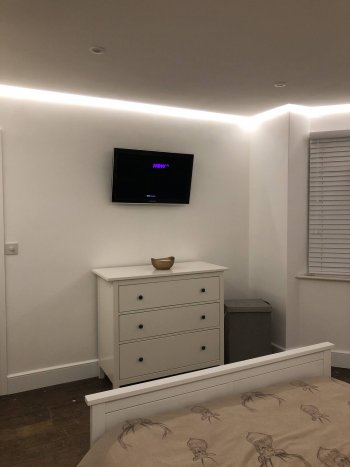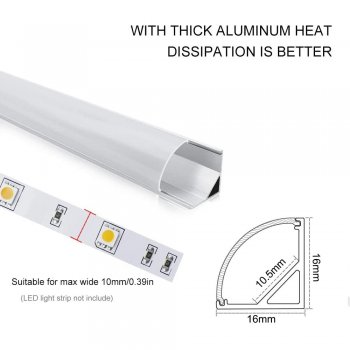Hey guys, wanted some help from people that may be more experienced in HomeKit.
I'm moving into my new place some time in the future and currently trying to plan out the smart home accessories.
One of the main issues is the lighting situation, I plan to run 2x lines of LED Strips across my living room ceilings along the sides as the main source of illumination (so no direct lights e.g hanging or recessed lights from the ceiling)
I've attached a couple of photos that I found to illustrate.
The setup is currently planned as: (Named A and B for easier reference)
Eve LED Strip (A) wired to the Wemo Dimmer Switch (B)
Some has shared that this setup wont make sense as when B is off, A will not be controllable to turn off/on
But since we will primarily only be using B to control the light switch off/on there should not be any issues? (and I could just group the accessories together so it toggles off/on together)
And in the event we do want to change the lights colours on A, we could have scene presets which would be able to take effect if B is on.
There'll be a couple of IFTTT's to make the above feasible.
If A = ON, and if B if OFF, turn B ON
If B = OFF, and if A is ON, change A to OFF (not likely frequently happen)
If A = OFF, and if B is ON, turn B OFF (but shouldn't need to since turning A off cuts power to B)
This way we only need to interact with A, and B is simply there for its fancy features of RGB and adaptive lighting.
I also assume the dimmer will communicate with the LED accordingly without any other further setup?
We do not want to have smart LED strips with dumb switches since the switches would then passively need to be in a "on" state.
And to have smart switches with static colour LEDs is not something we want as well since we are rather keen on the adaptive lighting feature.
What do you think guys?
I'm moving into my new place some time in the future and currently trying to plan out the smart home accessories.
One of the main issues is the lighting situation, I plan to run 2x lines of LED Strips across my living room ceilings along the sides as the main source of illumination (so no direct lights e.g hanging or recessed lights from the ceiling)
I've attached a couple of photos that I found to illustrate.
The setup is currently planned as: (Named A and B for easier reference)
Eve LED Strip (A) wired to the Wemo Dimmer Switch (B)
Some has shared that this setup wont make sense as when B is off, A will not be controllable to turn off/on
But since we will primarily only be using B to control the light switch off/on there should not be any issues? (and I could just group the accessories together so it toggles off/on together)
And in the event we do want to change the lights colours on A, we could have scene presets which would be able to take effect if B is on.
There'll be a couple of IFTTT's to make the above feasible.
If A = ON, and if B if OFF, turn B ON
If B = OFF, and if A is ON, change A to OFF (not likely frequently happen)
If A = OFF, and if B is ON, turn B OFF (but shouldn't need to since turning A off cuts power to B)
This way we only need to interact with A, and B is simply there for its fancy features of RGB and adaptive lighting.
I also assume the dimmer will communicate with the LED accordingly without any other further setup?
We do not want to have smart LED strips with dumb switches since the switches would then passively need to be in a "on" state.
And to have smart switches with static colour LEDs is not something we want as well since we are rather keen on the adaptive lighting feature.
What do you think guys?



